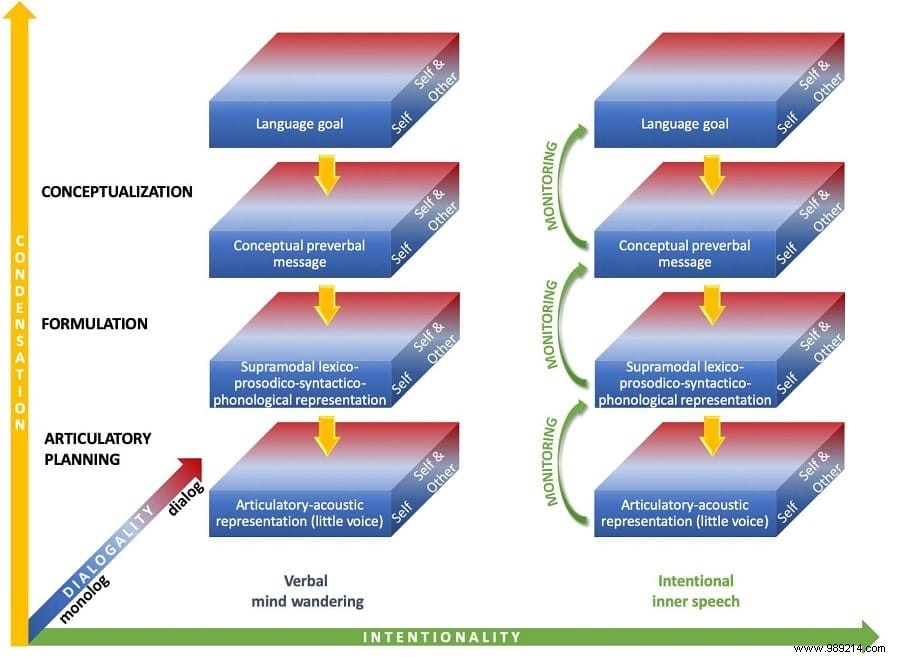Whether it's processing life experiences, shopping for groceries, or getting ready for a performance, many people use self-talk to prioritize their thoughts, more or less meaningfully. For several years, science has been studying this phenomenon, its reasons and benefits, as well as the consequences of its absence (which affects between 2 and 5% of the population), known as aphantasia.
For a long time it was assumed that an inner voice was simply part of being human. But it turns out that's not the case; not everyone manages their life with words and phrases. “By interior monologue, we mean a private discourse that is addressed to ourselves and that takes place without any articulation or sound “, explains Hélène Lœvenbruck, principal researcher in psychology and neurocognition and head of the language team at the CNRS.
With true self-talk, you almost "hear" your inner voice. You are aware of his tone and intonation. For example, the voice may sound angry or worried. Research has shown that children ages 5 to 7 can use an inner voice, and some studies suggest that children can use some form of inner phonetics as early as 18 to 21 months.
Loevenbruck's research examines self-talk in three dimensions, according to a 2019 study she and her colleagues published in the journal Frontiers in Psychology . The first is dialogue. Humans can have such complex self-speech that there is some debate over whether it is accurate to call all self-speech a monologue. So, the first dimension measures whether you talk to yourself in a monologue or a dialogue.

A monologue occurs when you think of something like "I need to buy some bread." But other times, when you reason, you can engage multiple points of view, like a conversation, a dialogue. The second dimension is condensation, a measure of the prolixity of your self-talk. Sometimes you think in words or in fragments. But other times, like when you're preparing for a conversation or a presentation, you're probably thinking in whole sentences and paragraphs.
The third dimension is intentionality. Do you voluntarily engage in self-talk? For reasons we don't know, sometimes inner speech can just drift you off to entirely random and seemingly disconnected topics. But a long-standing confounding factor in the study of inner speech was the fact that in studies people expressed their thoughts in words, even if they weren't exactly thinking in words.
This long-held assumption that everyone depends on an inner voice was first challenged in the late 1990s, largely by research led by Russell Hurlburt, a psychologist at the University of Nevada. . The absence of an interior monologue is linked to a syndrome called aphantasia. People with aphantasia do not experience visualizations in their mind; they can't mentally imagine their room or their mother's face.
Aphantasia and lack of inner voice are not necessarily bad. But a better understanding of inner speech and the wide range of thought processes people experience could be particularly important for learning methods and education in general, according to Loevenbruck. Until now, the kinds of self-talk and experiences children may have, and the resources they may need to learn, have probably been vastly underestimated.